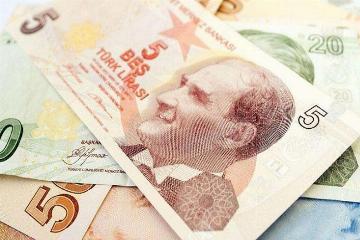Turkish Lira Suffers Historic One-Day Plunge
Advertisements
The fluctuations in the exchange rate of the Turkish lira against the US dollar have long captured the attention of financial analysts and investors worldwideRecently, a shocking 15% drop in a single day raised alarm bells, reminiscent of a bombshell in the finance sector, leaving many investors and observers in a state of disbeliefThis sharp decline is not just a number; it represents the struggles of an economy that has faced complex challenges for decades.
For professionals closely monitoring the Turkish economy, this staggering drop may not come as a complete surpriseExamining the historical patterns in Turkey's currency valuations and delving into the systemic issues inherent in its economic structure reveal a narrative that is both familiar and troublingTurkey's experience with currency devaluation, while dramatic, fits into a broader context of persistent economic difficulties that have plagued the nation for years, if not decades.
Since its establishment, Turkey has exhibited a historical neglect of the critical importance of taxation
Advertisements
Minimal taxation on large landowners and a flawed tax structure for private enterprises have resulted in an economy heavily reliant on foreign debt to drive domestic investment and industrializationFor instance, during the country's first Five-Year Plan, foreign loans constituted a staggering 56% of the total fundingThis reliance on external financing has provided temporary benefits but presents significant risks; after all, foreign loans come with hefty interest obligations.
Despite gaining independence in 1919, Turkey's industrial landscape has remained stagnant and unable to produce competitive goodsThis lack of industrial capacity forces Turkey to continuously seek dollar reserves through loans and investments from abroad, ultimately leading to soaring levels of external debtDuring moments of economic downturn or global crises, such as when the West tightens its lending practices, Turkey finds itself without adequate dollar reserves to cover these debts.
Traditionally, when faced with such predicaments, the Turkish lira tends to depreciate dramatically, succumbing to market forces indicating an oversupply of lira against the dollar
Advertisements
Such a phenomenon was observed at the end of 2020; Turkey's total foreign debt reached $430 billion, about 60% of its GDPThe country's annual GDP growth was insufficient to even cover interest payments, creating a precarious financial situation.
The global economic crisis attributed to the COVID-19 pandemic exacerbated the situationAs economies in Europe and the United States struggled to manage their respective crises, foreign investments and loans to Turkey dwindledConcurrently, large amounts of dollar-denominated debt were maturing in Turkey, creating a scarcity of dollars in the marketAs a result, the lira's value plummeted in a pattern that, while alarming, aligns with historical trends.
Analyzing the underlying factors responsible for this depreciation reveals important insights into the structural weaknesses within Turkey's industrial ecosystem
Advertisements
Frequent devaluation of a nation’s currency often indicates inadequacies in its industrial capacity and competitive capabilitiesWhen domestic production fails to meet market demand, the nation is forced to import products, creating an unsustainable trade deficit that hinders its ability to build foreign exchange reservesSuch a scenario places the currency in a vulnerable position, leading to ongoing depreciation—a chronic ailment difficult to cure completely.
Turkey, once boasting a per capita GDP of $12,600 in 2013, exemplifies an economy characterized by superficial and unsustainable growthOn the surface, economic indicators may reveal promising growth, but the reality points towards a lack of robust industrial foundations and competitive strengths, resulting in an overreliance on external funding and temporary economic stimulus measuresThis façade of growth resembles a castle built on sand; grand in appearance yet precariously unstable.
From a broader economic perspective, Turkey has, to some extent, become an economic satellite for Europe and the United States, serving as a supplier of raw materials
- Nvidia Under Investigation: Here's Why
- Is a Fed Rate Cut Imminent?
- Moderna's Value Infusion: Innovation Driving Growth
- Dramatic Drop in Yen
- Deposit Loan Growth: A Volatile Trend
These developed economies leverage loans and investments denominated in dollars to engage in multiple rounds of capital operations within Turkey's economic framework, reaping substantial profits while depleting Turkey’s economic resourcesThe lira's depreciation, in this context, not only signifies the country’s economic struggles but also reflects the larger imbalances inherent in international economic relationships, thrusting Turkey into a position of vulnerability against the backdrop of significant developmental challenges and pressures for structural adjustments.
As Turkey navigates these turbulent waters, the situation challenges policymakers to devise comprehensive strategies that aim to strengthen domestic industries and reduce dependence on external financingOnly by fostering self-sustaining economic growth can Turkey hope to break the cycle of currency depreciation and build a resilient economy capable of withstanding both domestic and global economic shocks.

Post Comment